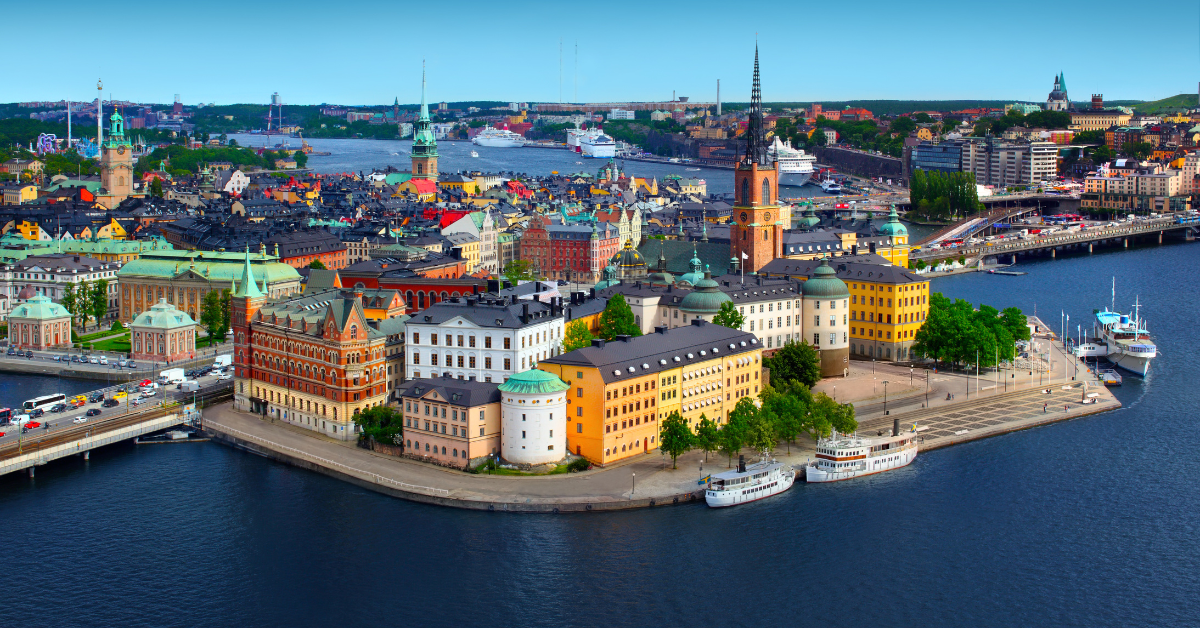Stockholm, the capital of Sweden, is a city surrounded by nature and known for its calm Scandinavian character. In Japan, it is usually written in katakana, but historically, kanji such as “士篤恒” and “須篤保留武” were also used. These forms are not official, but they show how Japan once tried to represent foreign names. Today, the city is associated with tourism, design, sustainability, and sports, shaping a rich image in the Japanese mind.
The History of Stockholm’s Kanji Representation
Kanji as Phonetic Transcriptions
Stockholm has no official kanji representation. However, during the Meiji and early Showa periods, kanji such as “士篤恒” and “須篤保留武” appeared in translations and newspapers. These were phonetic transcriptions prioritizing sound rather than meaning. They reflect a part of Japan’s translation culture at the time and are now seen only in historical records.
Difference from Chinese Representation
In Chinese, Stockholm is written as “斯德哥尔摩,” a phonetic transcription closer to the actual pronunciation. Similarly, Japan’s earlier kanji attempts followed the same principle. However, katakana is the standard form in modern Japanese, and the average person recognizes “ストックホルム” only in katakana. Today, kanji versions remain a historical curiosity.
How Japanese People Perceive Stockholm
Impressions as a Tourist Destination
Stockholm is often described as a “City of Water” because of its beautiful waterfront scenery. The old town, Gamla Stan, with its historic buildings, is especially popular among tourists. Visitors also appreciate the seasonal contrasts: the midnight sun in summer and the fairy-tale winter scenery make Stockholm a destination where each season brings new experiences.
Tourism Highlights Table
| Season | Japanese Impression | Main Attractions |
|---|---|---|
| Spring | Blooming city with a calm atmosphere | Royal Palace, City Hall |
| Summer | Midnight sun and waterfront walks | Drottningholm Palace |
| Autumn | Cultural events and autumn foliage | Museums, festivals |
| Winter | Snowy scenery and Christmas markets | Gamla Stan, ice rinks |
Impressions of Culture and Lifestyle
Through the influence of Scandinavian design, Japanese people strongly associate Stockholm with a “simple and refined lifestyle.” Brands like IKEA and H&M contribute to this image. Stockholm is also seen as a hub of creativity, often featured in movies and literature. To Japanese eyes, it represents both elegance and practicality.
Culture and Lifestyle Features Table
| Field | Japanese Appeal | Examples |
|---|---|---|
| Design | Simple and functional | Nordic furniture, architecture |
| Fashion | Modern and practical | H&M, Acne Studios |
| Lifestyle | Harmony with nature | Eco-houses, recycling habits |
Social Image
Stockholm is widely known for its commitment to sustainability. From electrified public transport to extensive cycling networks, the city is viewed as a model for sustainable urban living. Japanese people often describe it as a “future-oriented city” that provides valuable lessons for their own society.
Environmental Policy Initiatives Table
| Initiative | Details | Japanese Perception |
|---|---|---|
| Public Transport | Electric buses, bike sharing | Innovative and inspiring |
| Recycling | Strict waste separation and reuse | Impressed by eco-consciousness |
| Urban Planning | Preserving green areas, eco-housing | Model of sustainable living |
Stockholm Seen Through Sports
Olympic Host City
Stockholm hosted the 1912 Summer Olympics, an event that significantly raised its international profile. This was also the first Olympics where Japanese athletes competed, giving it historical importance for Japan as well.
Everyday Sports Culture
In Stockholm, sports are part of daily life. Citizens enjoy running and cycling throughout the year, while winter brings skating and cross-country skiing. For Japanese observers, this creates the image of a “healthy and active city.”
Sports Activities and Japanese Impressions Table
| Sport | Local Participation | Japanese Impression |
|---|---|---|
| Soccer | Popular among children and local clubs | Friendly and approachable |
| Ice Hockey | Nationally loved sport | Dynamic and powerful |
| Skiing | Common winter leisure | Healthy Nordic lifestyle |
| Running | Practiced in parks and along lakes | Energetic and lively |
Japanese People’s Comprehensive Image
| Field | Japanese Perception |
|---|---|
| Tourism | City of Water, beautiful scenery, historic old town |
| Culture | Scandinavian design, stylish and refined |
| Society | Environmental awareness, sustainable urban model |
| Sports | Healthy lifestyle, Olympic host city |
| Language | Commonly written in katakana, not kanji |
Conclusion
Although historical transcriptions such as “士篤恒” and “須篤保留武” exist, katakana is now the mainstream way to write Stockholm in Japanese. For Japanese people, the city symbolizes beautiful natural landscapes, elegant Nordic culture, and modern sustainable living. Furthermore, with its Olympic history and active sports culture, Stockholm also stands out as a city of health and international exchange. Altogether, these aspects shape a multi-layered perception that deepens cultural ties between Japan and Stockholm.






